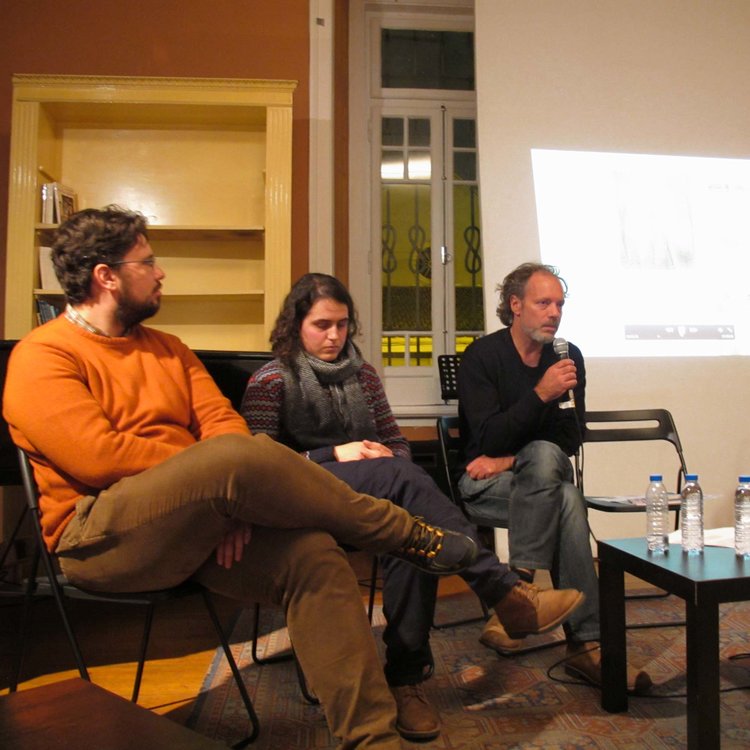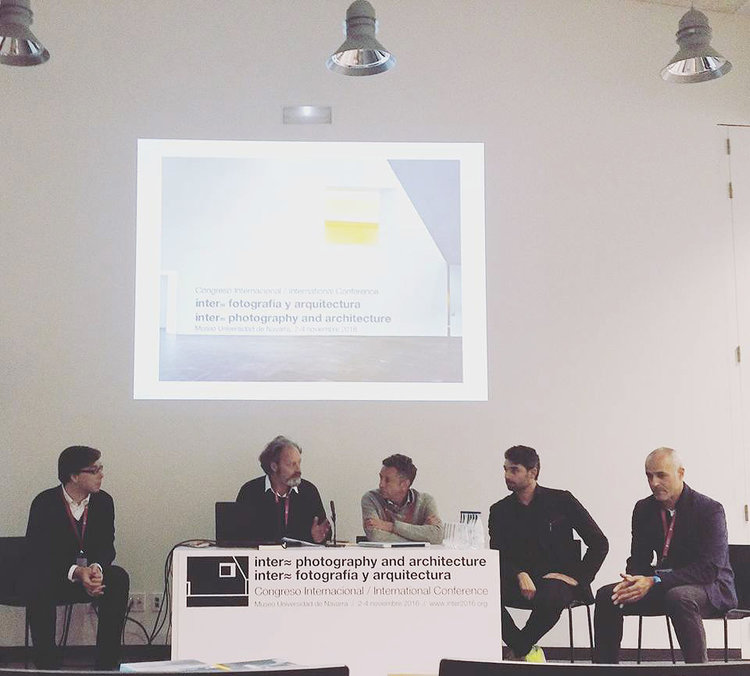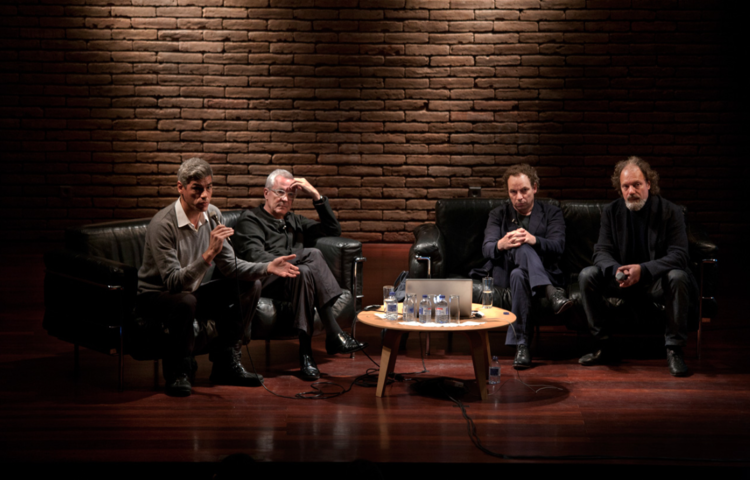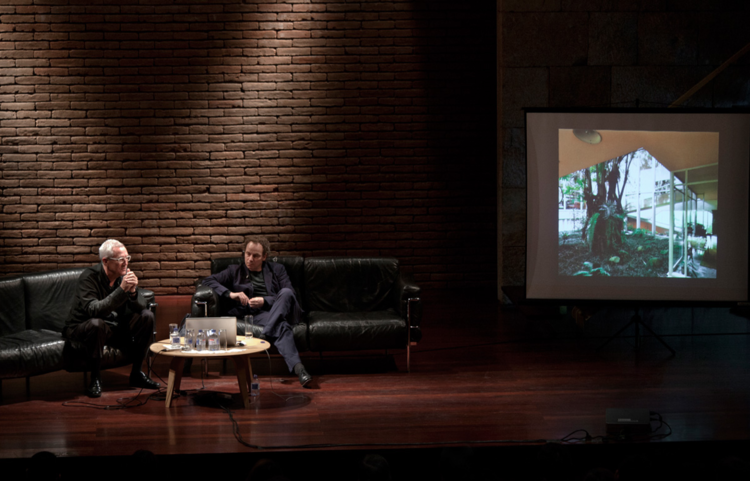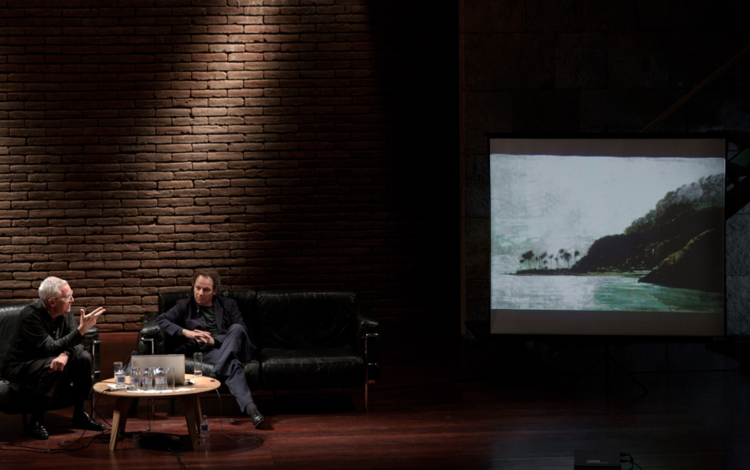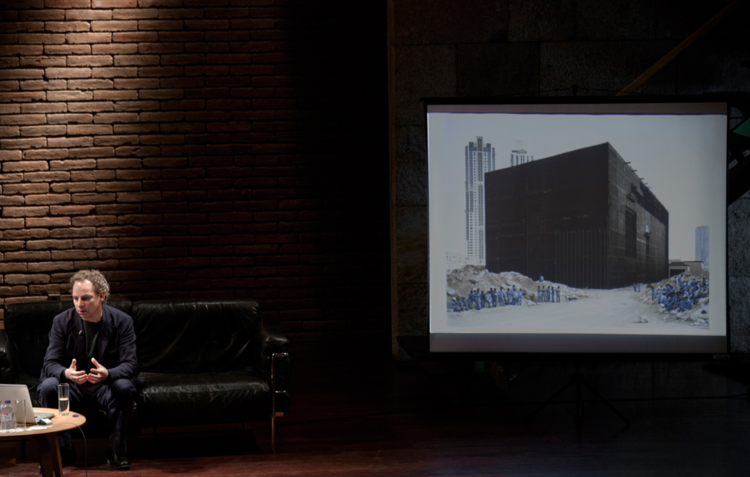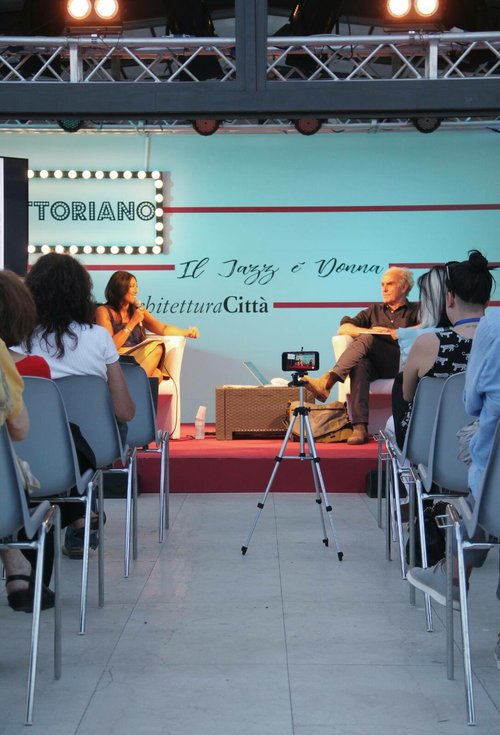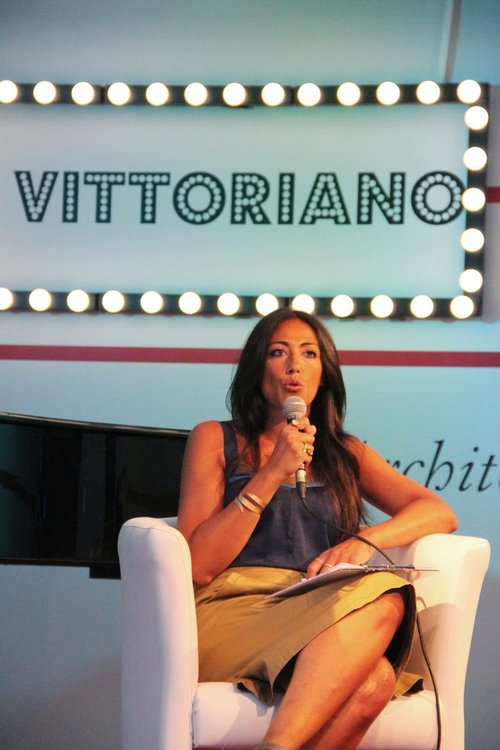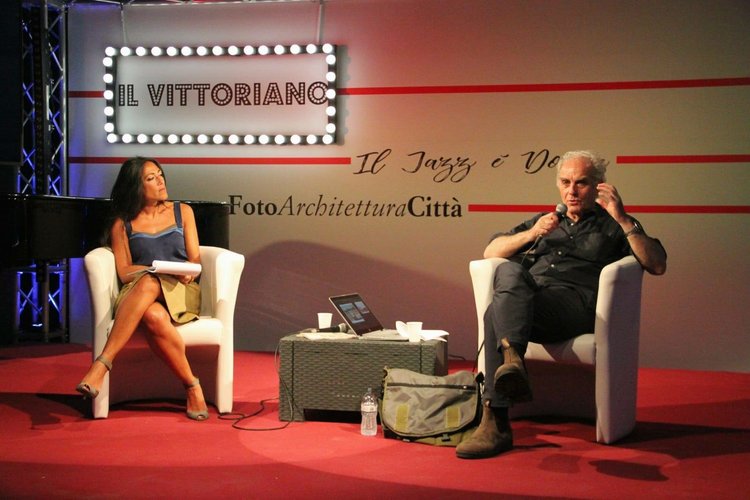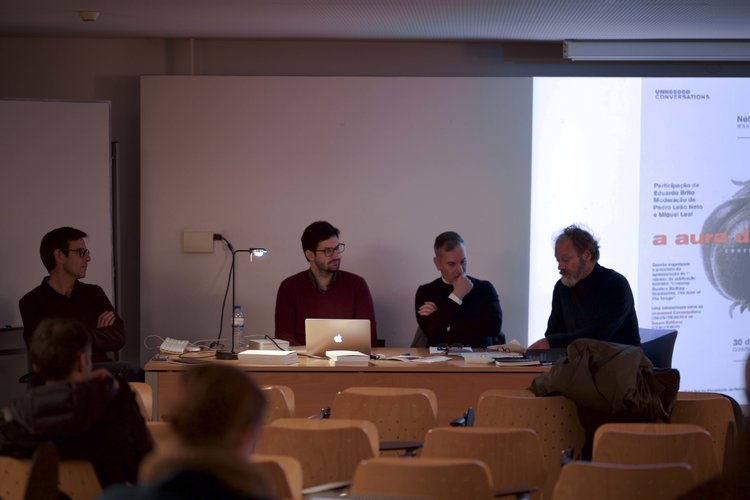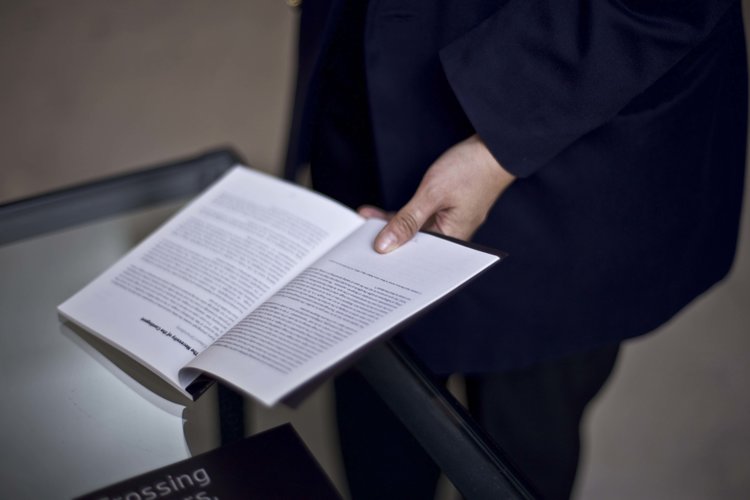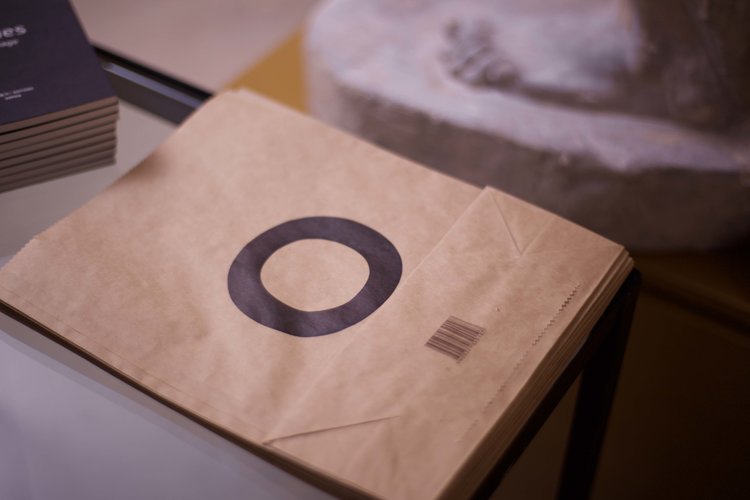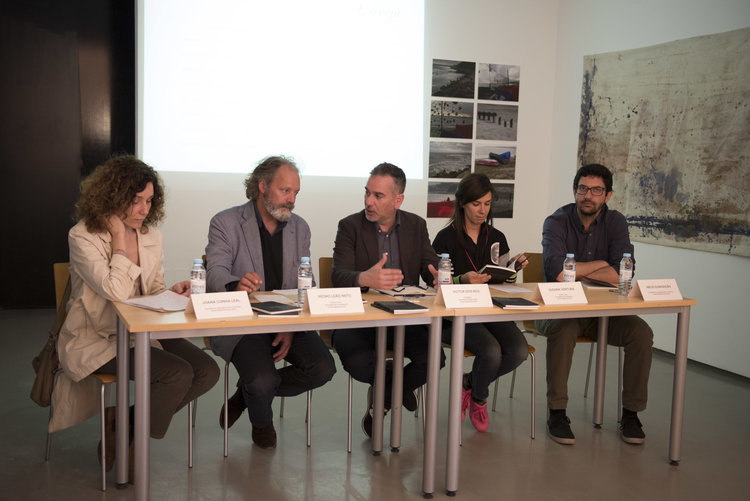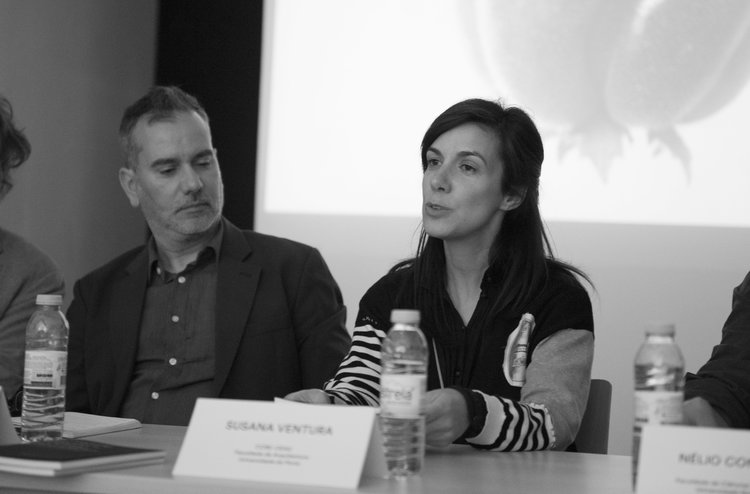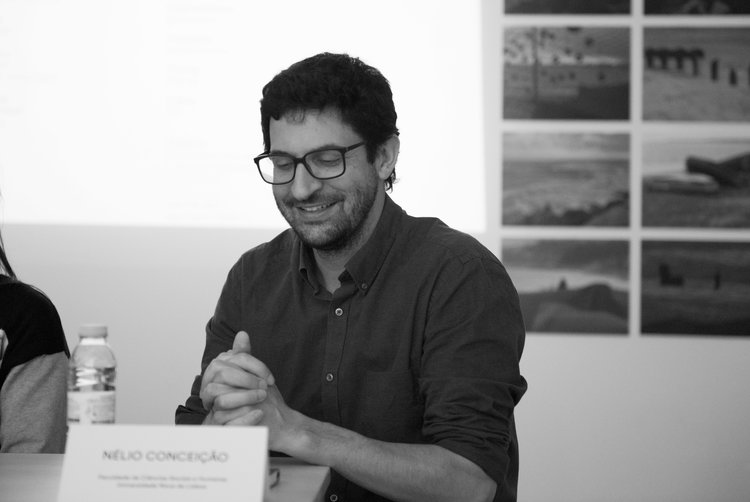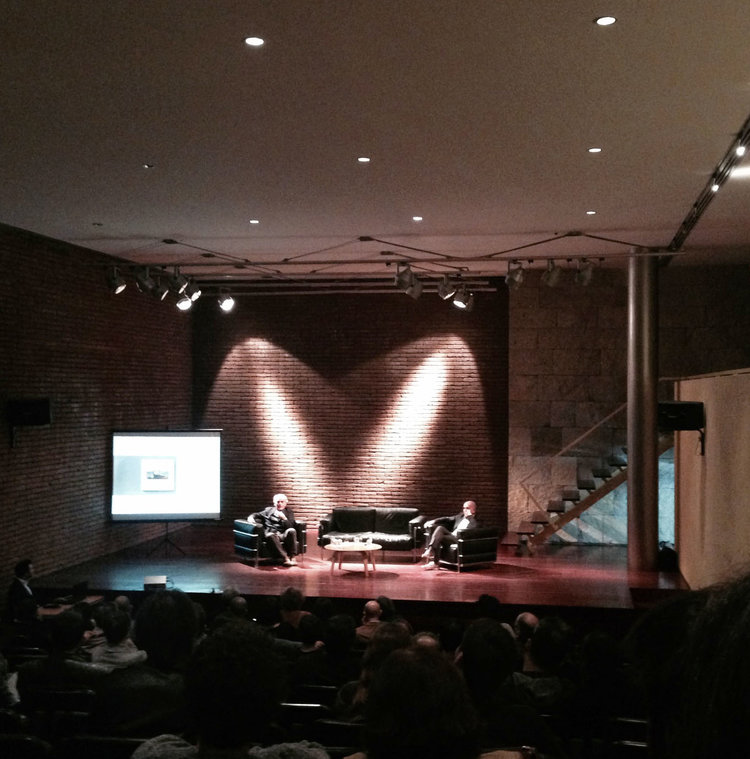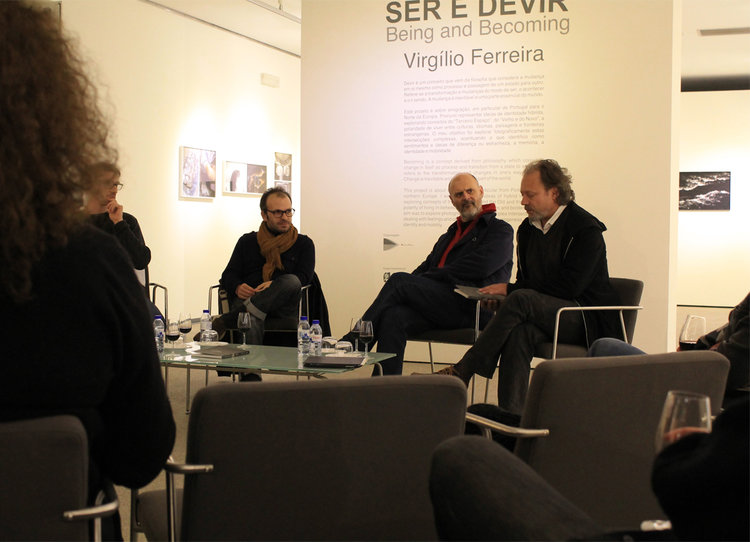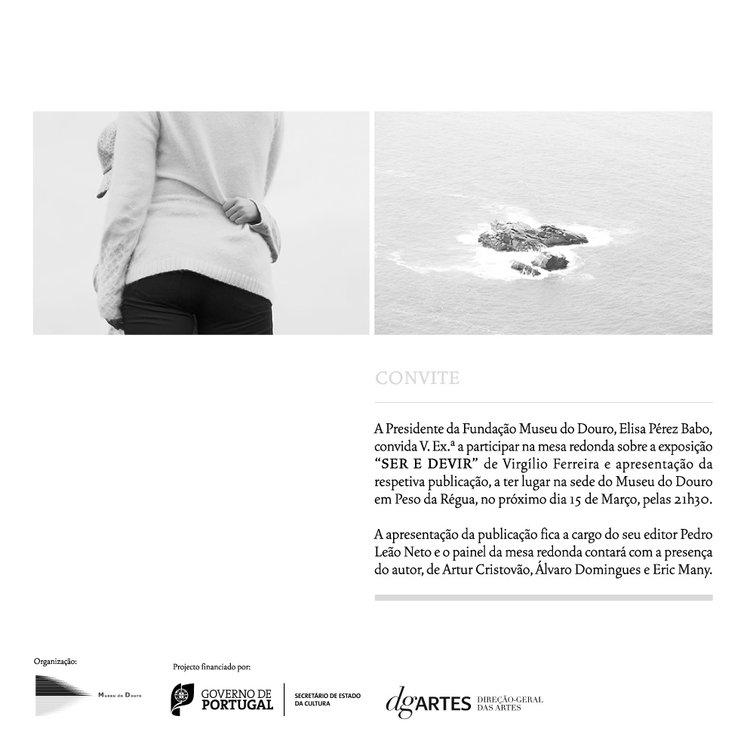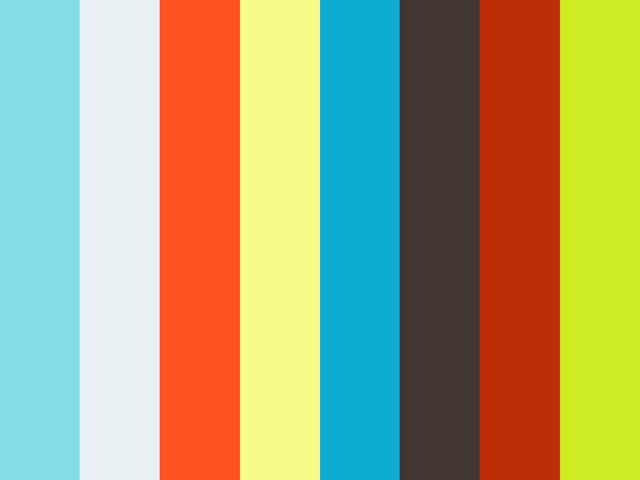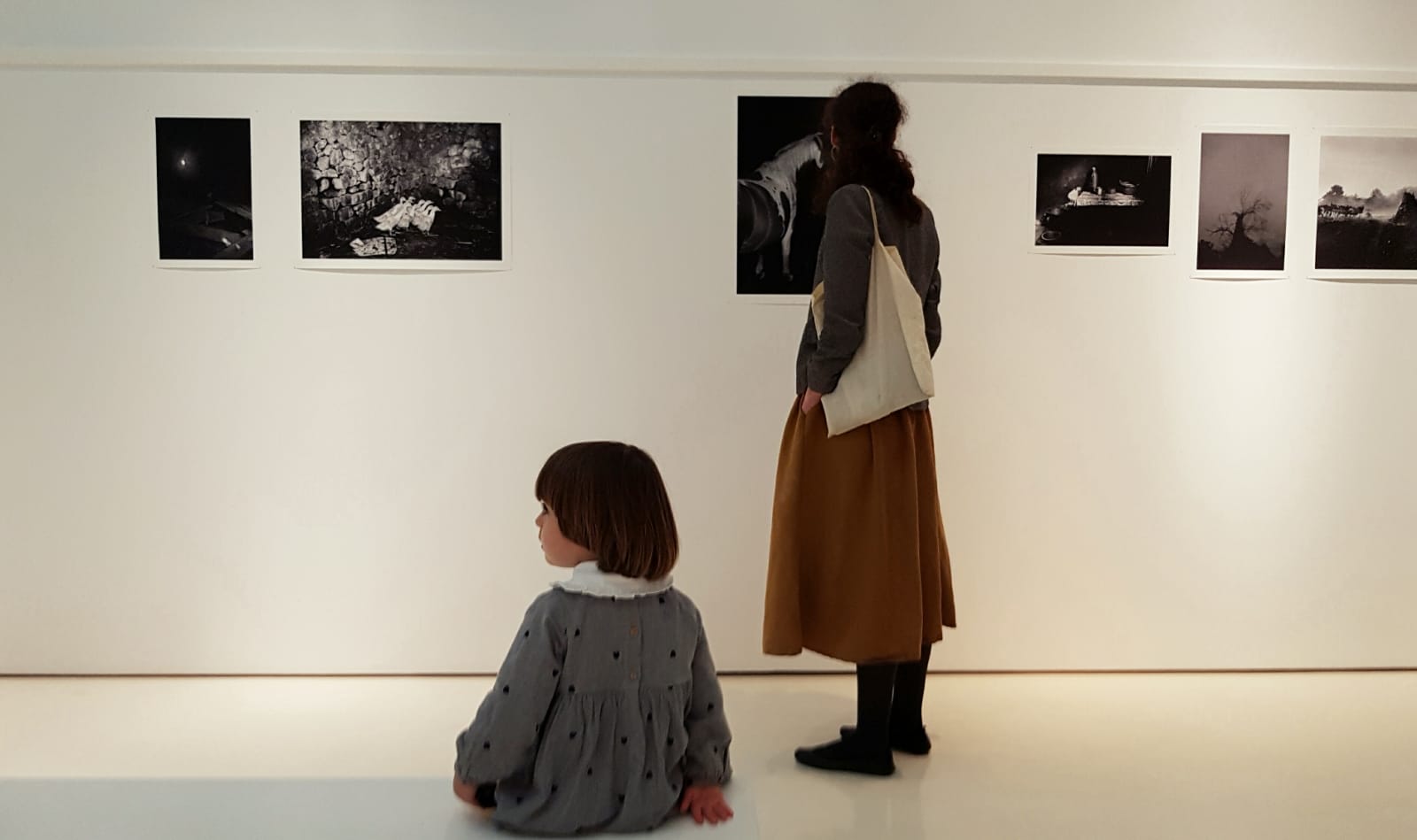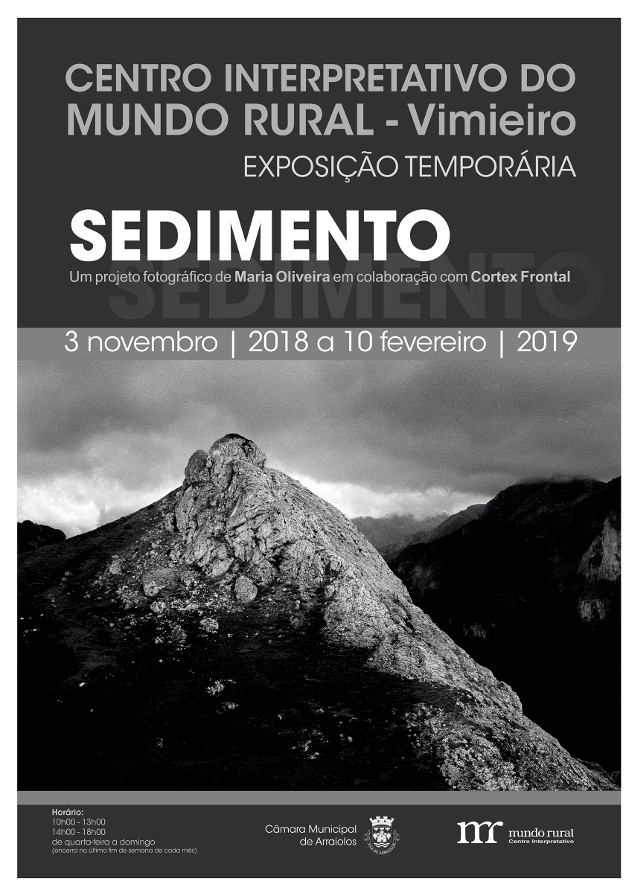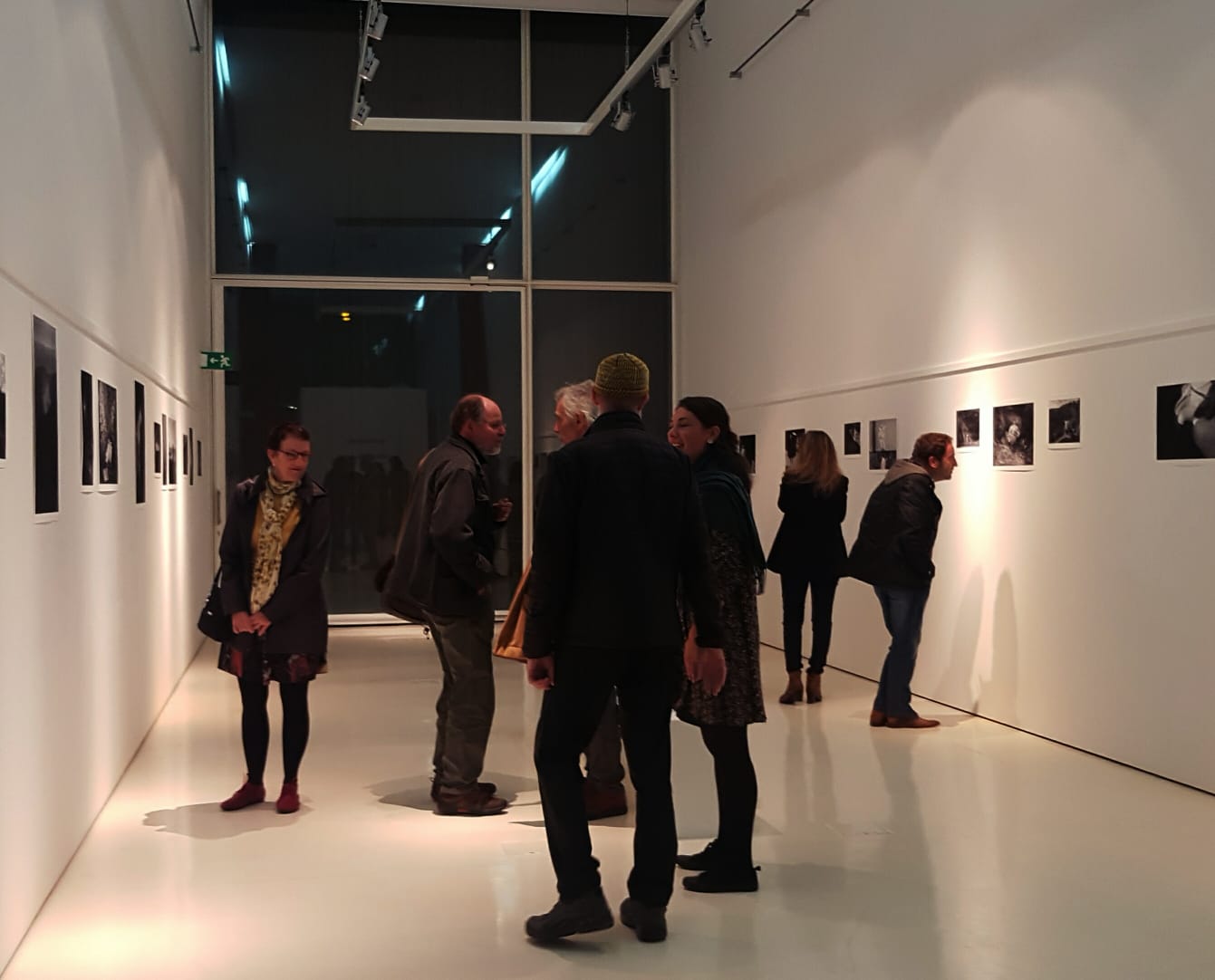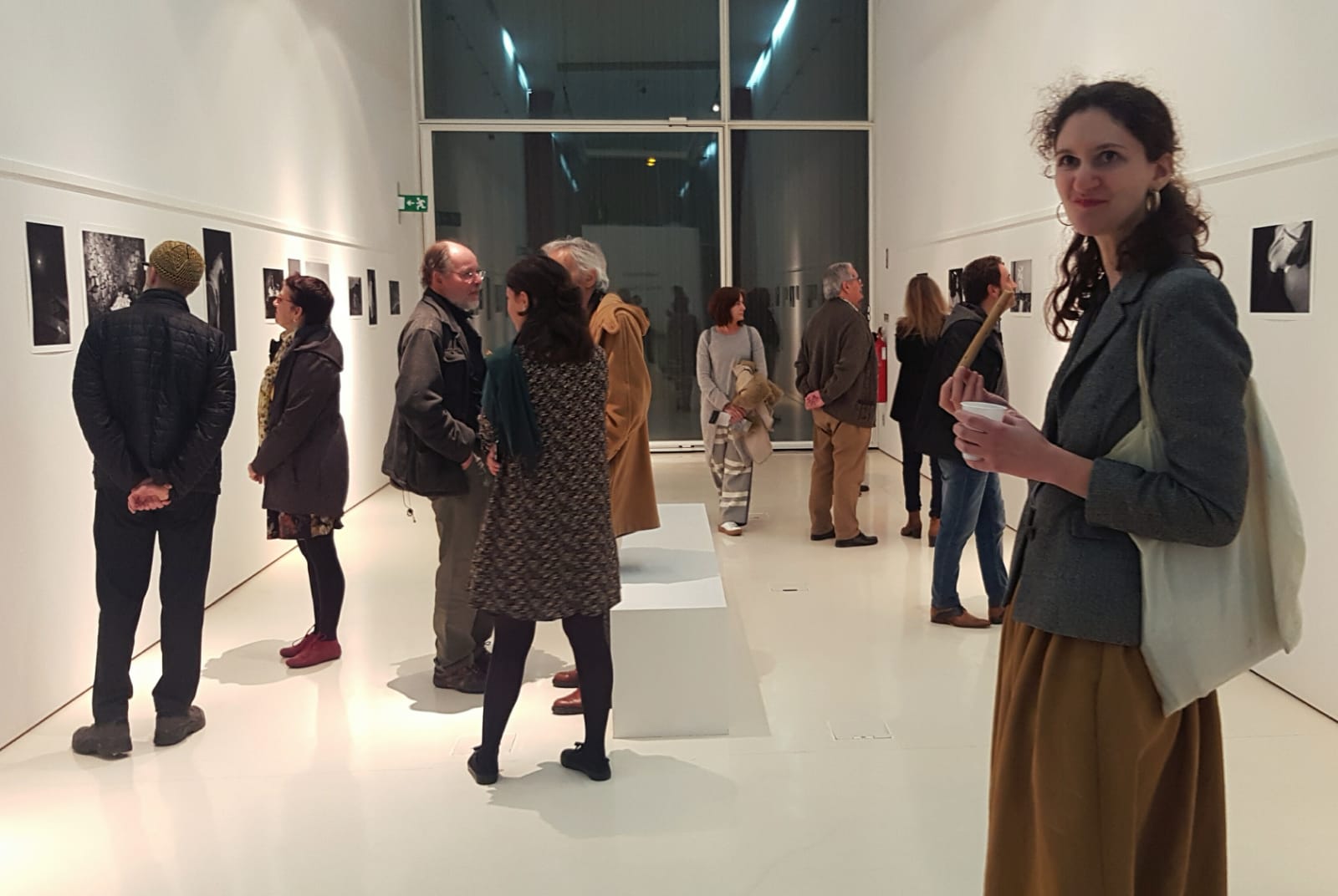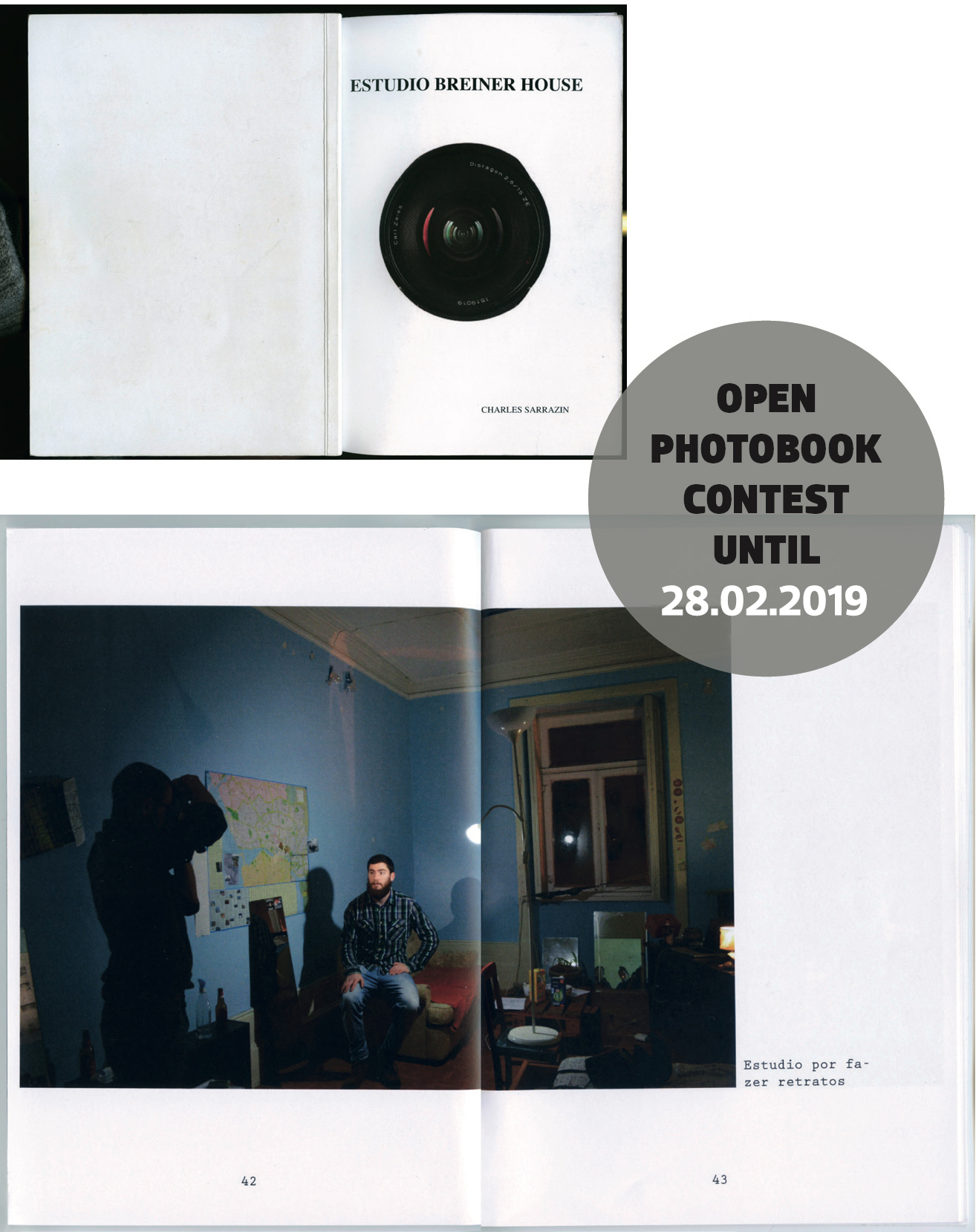ARCHITECTURE PHOTOGRAPHY: THE COMPLEMENTARY INSIGHTS OF A PHOTOGRAPHER IN DIALOGUE WITH A CURATOR
with the Portuguese curator Pedro Gadanho and the Italian photographer Paolo Rosselli
The second session of the conference cicle AAI – Architetcure, Art and Image – at Casa das Artes, in Oporto, occured on the 30th October. This event was organized by the architects Camilo Rebelo and Pedro Leão Neto in collaboration with the Scopio Editions and research group CCRE (FAUP) and with the institutional support of Casa das Artes.
To this second edition were invited the Portuguese curator Pedro Gadanho and the Italian photographer Paolo Rosselli, who developed a conversation about Architecture Photography, focusing on the work of Rosselli.
On one side, we had Pedro Gadanho, an utter connoisseur of the many ins and outs of this universe of Architecture Photography, denoting a very serene and intelligent posture, always making sure the conversation would not cool down or be lead to an uninteresting point, intervening from time to time without ever trying to be the centre of attention. Almost playing the role of the host, Gadanho insisted on standing out his interest on Paolo Rosselli’s work, mostly because it brings a humanized and quotidian side normally not so deeply developed by the traditional approach to Architetcure Photography.
According to the Portuguese curator, the main stream publications highlight and invest excessively on the aesthetical and constructive matters of Architecture, often creating stereotypical images without the intelligence and sensibility required to comprehend the architectonic space and the site in which it is inserted. On Gadanho’s own words, this recurrent praxis “tends to be exhaustive by portraying a building from every possible angle and trying to give a false objectivity of that building or architecture” by means of “certain tricks that work out oddly, like trying to remove people” and most of all ”trying to obliterate the city from the scope of architetcure” much by influence of “the architect’s desire to aestheticize their own work, making it something abstract, devoid of any quotidian dimension.” Gadanho believes that Rosselli’s photographs are on the antipodes of this more usual and common approach, offering us a richer and more profound understanding of architecture and space, by means of a vantage point and artistic strategy that results in critical images that allow a new perspective on architecture and the city through images whose framework and plasticity capture with sensibility, intelligence and emotion, the life and configuration of Architectural space.
On the other side, Rosselli brought a very clear tone to the conversation, reminding that Architecture Photography is, before anything else, Photography and that its range and possibilities are not restrict, even fitting inside a certain category, among many others, when we talk about Photography. According to the Italian photographer, one should not approach Architecture Photography in a technical way but in a personal one, finding in his personal approach the motivation for his constant search for a new relationship with Architecture through Photography. Curiously, in his case, this new relationship with Architecture is in many cases established by means of a direct inspiration in fictional literature, developing a kind of filter, typical of a novelist or a poet, that allows him to discern in which way and what to capture or not in his photographs – in this matter, he grasps much of the puctum epiphany, bequeathed by Roland Barthes – assuming nonchalantly that for him “the most important is, above all, to read books.”
It is possible that his amusement by this layered fusion between objects and fragments in his photographic work may come from this literary universe, becoming almost a pattern in his work the combination of elements that, beforehand and by a certain inherence, do not go together: “it is my process”, says Rosselli, “I am very tolerant in Photography” – a tolerance that he takes to the point of intervening graphically a posteriori on the captured image putting any purism aside. It is in this limbo, in this undefined exploratory area, that one sees how much Photography is for Rosselli an instrument of discovery, not only of the world of Architecture but also of himself, as he goes along, becoming more and more aware of certain personal and selective paradoxes. This can be seen, for example, with his dislike of cars in real life in confrontation with the fact of using these same cars in his photographic compositions, considering them a valuable addition; or his aversion toward shopping that converts itself into a kind of fascination by photographing shopping places.
In parallel, or maybe in consequence of his personal approach rather than a technical one, Rosselli assumes, even with a certain pleasure, a voyeuristic facet – beyond the inseparable voyeurism of the photographic act. For example, this happens when he suggests to the viewer his constant, however subliminal, presence in his photographs, without letting the camera capture parts of his own physiognomy. Moreover, along his speech there were some indications that this effect, this implicit impression on his work, may be profoundly related to a very peculiar vision of the world, of a very experimented and wise lightness, when he says “I don’t want to be serious; life is serious but I like to be funny.”
Albeit his lightness, Rosselli was neither superficial nor unilateral at any time about his more personal and intimate posture towards Architecture Photography. From the very beginning, Rosselli stressed the umbilical relationship between the photographer and the camera – an old discussion on Art and Technique and becoming more pertinent and actual nowadays – presenting an insight about his long study and questioning relating to that bond between Man and Machine. “Since I started photographing”, says Rosselli, “ I started a competition; who is making photography: the camera or Mr.Rosselli?”. From this restlessness, which at any moment diminishes his legacy as an author, he stands stoically in defence of Technique: “The camera is not a stupid object. The camera sees more than the photographer” even because, he admits, “I have many prejudices but the camera does not[...] the camera is freer than Mr.Rosselli.”
Other essential issues were also discussed, like the process of deconstructing conventions in Architecture Photography, the way in which the space is read, the relationship with the viewer, the interpretation of images or even the implication of two authorships in conflict – the architect’s and the photographer’s – always with an open mind and without prejudice, in a clear search for insights coming from a practical experience and from the reflections that this practice brought about, whether from the photographer’s point of view, whether from the curator’s.
In the final part of the conversation, Gadanho introduced some important ideas related to the logics of representation linked to the universe of Architecture Photography. He enhanced the relevance and interest of having adopted, at a certain point, a perspective and modus of work that tried to be more diversified, going beyond a certain traditional representation of Architeture. He brought back the idea that Architecture is truly a cultural production, making necessary this enriched interpretation from other quadrants, for it contributes to its openness – in the sense of Umberto Eco’s open work by. The praxis and discipline of Photography allow this enrichment of architectural interpretation by making possible the representation of vantage points that may diverge from the ones with which the architects would like to see their work represented. This allows to create in many cases a richer spatial interpretation and representation of the work of Architecture that should not be limited in the self-representation of the architect, assuming itself as a work of interpretation per se.
Much more a duet than a duel, this meeting of a little more than an hour between the Portuguese curator and the Italian photographer, contributed significantly to shed some light over some less obvious particularities in the field of Architecture Photography, never losing the essayistic sense one requires when two individualities meet. Undoubtedly, it was a significant valuable dialogue and text.
Author
Mário Carvalho (colaborador da scopio network)
Editorial review
CCRE/FAUP (Editorial Department, scopio Editions)

